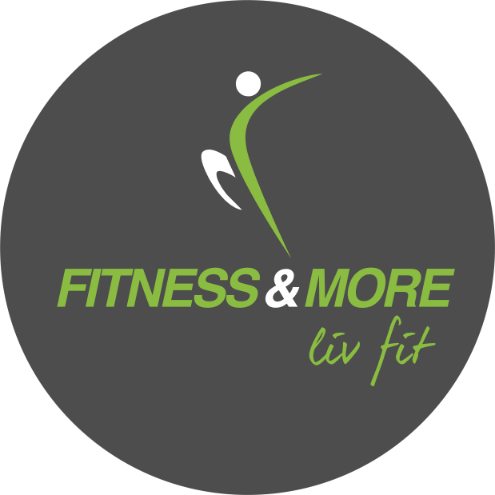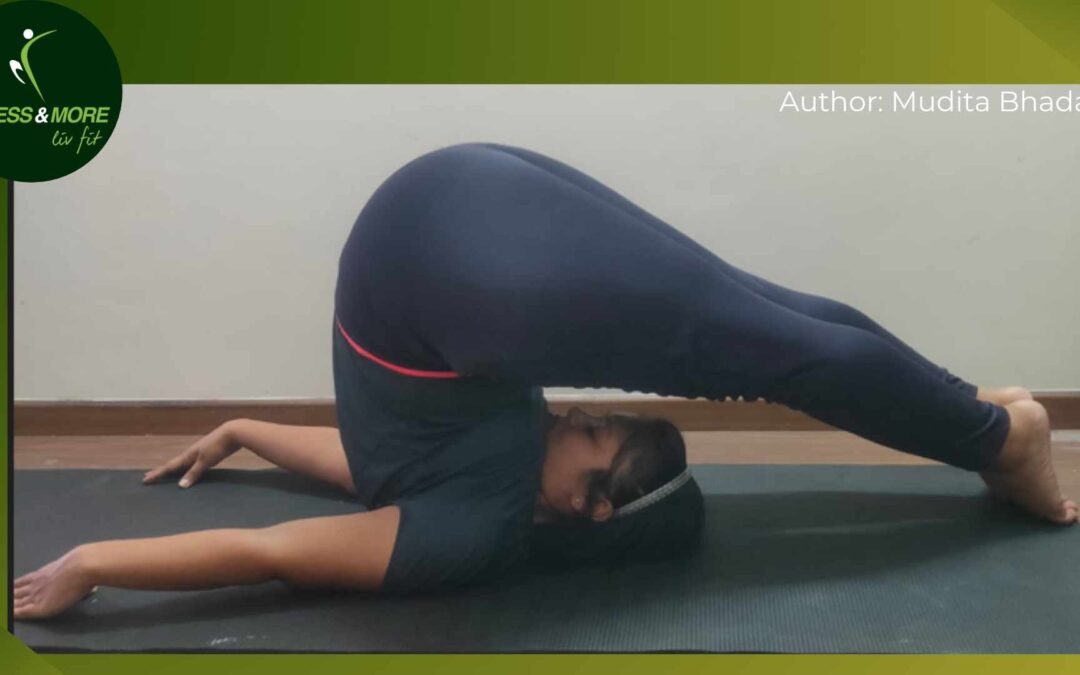Halasana is one of the inversion postures in which feet are placed over the head. It is one of the classic yoga pose, rejuvenates the entire body, massages the abdominal organs, and stretches the entire spine and back muscles.
It is an intermediate yogic posture. For a beginner, it would be challenging to touch the feet to the ground over the head. Continuous practice of this posture makes the body flexible. Further, holding the posture for some time relaxes the entire body and gives a new perspective. It is usually done at the end of practice to stretch and relax the entire body.
It is said that he/she who practices Halasana is very nimble, agile, and full of energy. People who perform Halasana regularly are highly active, quick, light-footed, and full of spiritual energy.
Mythology and Origins
The word Halasana consists of two Sanskrit words, Hala and Asana. Hala means “Plough” and Asana means “posture”. It is called Halasana as the body takes the posture of plough in this posture.
Symbolically, we see a plough is used by a farmer to prepare the earth for sowing new crops or plants, to give new life to a barren land/field. Similarly, regular practice of Halasana also provides new energy, life or helps in rejuvenating the entire body. Here, the body symbolizes the barren land and the plant can be symbolized our new life.
Mythology
There are various stories associated with Halasana. One of the most popular stories is of King Janaka of Ramayana, who was a Karma Yogi. He cared a lot for his subjects. The King and his wife wanted to have a child and they tried pleasing various Gods but all went in vain. He started ignoring his subjects due to which drought in his Kingdom. Being felt guilty, he himself went to plough the fields. While ploughing the fields, he found a beautiful child which he named Sita. This story is representative of the power of the plough as a tool for revealing hidden treasures.
Further, there are various other stories of Balaram from Mahabharata, who was also called Haladhara, who used his plough to drag their city of Hastinapur towards the sea, frightening all with his might, which is an example of how plough can be the cause of destruction.
Benefits of Halasana
This posture impacts the entire body as the entire body from head to toe is engaged while doing this pose. Some of the major benefits are as follows:
Physical Benefits
- It helps in increasing the flexibility of the entire body.
- It stimulates the thyroid gland, which plays an important role in metabolism and growth, and development of the body
- It helps in reducing the stiffness of hamstrings, calves, and hips and increases flexibility. It also helps in toning and reduction of excess fat from thighs and hips
- It is an excellent exercise to release the strain from the spine and helps in relaxing and stretching the back muscles. It also helps in the reduction of pain and stiffness in the back.
- It massages the abdominal muscles, pancreas, etc which helps in reducing digestive disorders such as constipation, loss of appetite, etc. It also helps in reducing extra fat from abdominal muscles.
- It strengthens the shoulder muscles and increases the mobility of shoulder muscles
- It helps in regulating blood circulation in the entire body as the lower body is bent forward over the head.
- It also regulates the blood sugar levels by regulating pancreas function and therefore, is beneficial in diabetes.
- In case, deep breathing is done while holding in this posture, then it also results in improving the respiratory system.
- Further, deep breathing reduces stress and helps strengthen the immune system.
Spiritual Benefits
- It helps in the improvement of focus, concentration, and memory.
- It calms the nervous system and reduces the stress level.
- It helps to increase the awareness of the body.
- It also helps to activate the Manipur and Vishuddhi Chakra.
Preparatory Poses
Some of the preparatory poses are as follows. These postures provide sufficient strength and flexibility in the back, shoulders, and neck so that one gradually achieves the correct posture
- Pavan Muktasana
- Sarvangasana
- Setubandhasana
- Ardha Halasana
Further, rolling front and back in Halasana also helps to perform this pose and open body.
Who Should Not Do Halasana?
- People who are suffering from a back injury, slipped disc, sciatica, hernia, or acute digestive problems should avoid doing it as it may worsen the condition
- People having high blood pressure should avoid doing it
- People suffering from asthma, respiratory problems, or heart problems should avoid doing it
- In case you have had surgery recently then also you should avoid doing it as it may open up the stitches
- In Pregnant women and during menstruation, the posture should be avoided as a lot of pressure is put on the abdomen
- The posture should be performed 3-4 after having meals
- Beginners should do it only under the supervision of a Yoga Expert.
Steps To Perform Halasana
The steps to perform Halasana are as follows:
- Lie down on the floor with legs stretched out forward. Hands should be resting on the ground near the thighs with palms facing downwards. Your breathing should be normal.
- Raise your both legs straight at 90 degrees. The spine should resting be on the ground. In case you find it difficult to raise both legs, you can bend the knees and then raise your legs off the ground. Inhale while raising the legs. If you are holding posture, breathing should be normal.
- If you are a beginner, try to hold this position for some days until you can hold this posture comfortably.
- Slowly lift your hips and spine toward the ceiling with the support of your hands and roll up. Bring your legs toward the head slowly until they touch the ground over your head. Exhale while going into the position.
- The spine should be kept straight. Hands should be placed near the middle back to provide proper support. Press the hands on your back to keep your back straight
- While rolling up or holding the posture try to keep the legs straight. You may bend the knees to ease the posture.
- Keep the pressure on your shoulders. Do not put pressure on your neck or head. You can tuck down your shoulders to release the pressure on your neck.
- Try to hold the posture for some time and focus on your breathing. Breathe should be normal. You can tuck in or stretch out the toes as your body allows.
- Once you are there in posture, try to balance it properly. If you are feeling pressure on one side, then adjust your body. Try to keep your body straight.
- To come back lift your legs and come back to your original position
To make it more challenging
- If you are able to hold the above posture comfortably, you can straighten the hands behind the mat or clasp both hands behind the back on the mat. In this, you will feel more strain on abdominal muscles and spinal muscles would be more stretched
- You can also open your legs in the Halasana position and try to grip the toes with your hands.


Counter Pose
- Matsyasana
- Supta Vajrasana
- Ushtrasana
- Shavasana
Precautions For Beginners
- Always perform this asana over a mat
- While raising your legs at a 90-degree angle keep your spine at the ground.
- While holding in asana, keep your spine straight
- Do not put a strain on the neck and do not move the neck while in the pose, otherwise, it will cause injury to the neck
- Do not over-stretch or overstrain your body yourself. Try to hold in a position that is comfortable for you.
- Use your hands to provide support to your back. Keep hands on the middle back and press on the back. It will help you to perform this posture better and keep your back straight
- Use shoulders to balance while being in the posture. Do not keep too much space between your hands.
- Keep your hamstrings tight and active. It will help you to move forward
- In starting you may feel a headache or pain in the abdomen. These are only temporary and with practice, these will go away
Tips for Beginners
- In the starting, instead of doing the entire pose in one go, you can hold at a 90-degree position. Once you are comfortable try to perform the posture
- You can use the chair in the beginning and instead of touching the ground keep your feet on the chair. Instead of a chair, a wall or blocks can also be used to support the toes and hold the posture.
- Initially, you can also bend your knees while going up. It will help to posture easily.
- You can also keep a blanket under your shoulders for support.
- Hold at the point where you are comfortable. Do not overstrain the body.
- You can also start with a single leg in the beginning with the support of the wall.
Caution: This asana should be performed in the presence of a Yoga Expert to avoid injuries. Do remember that everybody is different and the impact of Asana on everybody is different.
HAPPY DOING YOGA!!


The photos are very small and green background is disturbing. It would be more helpful if photos are kept little big for clarity…
Nice article????
Thanks for your Suggestions.